Exploring Mars has been a dream, but survival on the Red Planet requires more than just curiosity. It needs the ability to create essentials like oxygen from local resources. An AI program just made archiving that dream a little bit closer.
Mars possesses less than 1% of the Earth's atmospheric composition, with carbon dioxide constituting approximately 96%. In contrast, oxygen on Mars accounts for a mere 0.13%, a stark contrast to the 21% found in Earth's atmosphere. An astronaut standing on Mars wouldn't find the Martian air suitable for breathing.
To secure oxygen on Mars, the options are limited to either transporting it from Earth or synthesizing it on-site. A robotic chemist powered by artificial intelligence (AI) might have the solution for oxygen production on Mars.
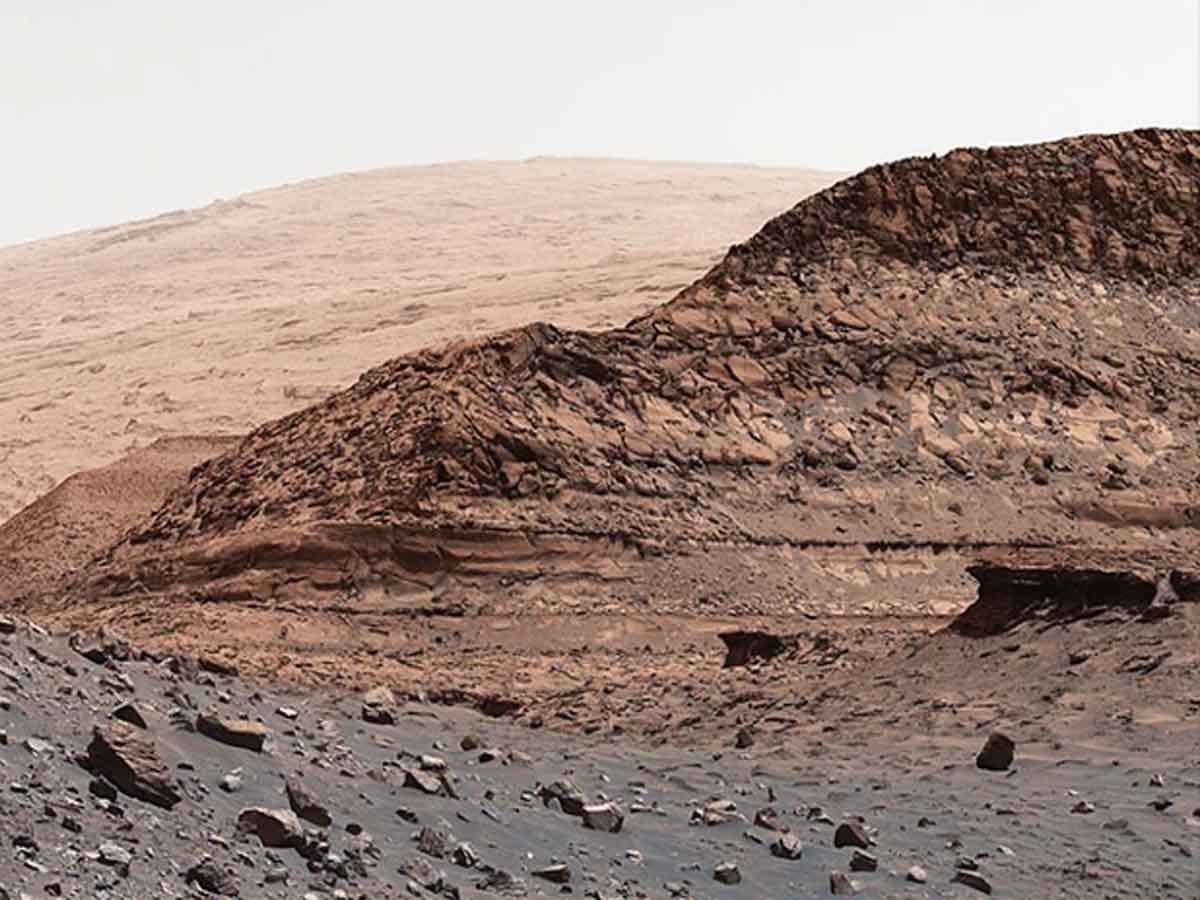
Recent findings indicate water activity on the Red Planet, raising the prospect of large-scale oxygen production through solar power-driven electrochemical water oxidation processes using an oxygen evolution reaction catalyst.
Last October, NASA's Curiosity Rover found signs that Mars used to be a "planet of rivers." Imagine that – rivers on Mars! There could have been liquid water, maybe even a cozy spot for some tiny Martian creatures. But here's the catch – before all this river talk, we already knew about Mars having solid water.
Now, in 2022, Cambridge University adds more to the story. They're saying there's evidence of liquid water hiding beneath the ice caps. So, Mars might not just be a dry, dusty planet; it could have some hidden water spots.
Basically, these findings inspired more and more research on generating oxygen on Mars. As a result, we got an AI-driven chemist.
The China AI Powerd Chemist
Unlocking Mars' mysteries goes beyond curiosity—it's about survival. In situ resource utilization (ISRU) is the key. It's the art of tapping into local Martian resources to sustain human exploration.
Oxygen is the golden ticket for any human activity on the red planet. From fueling rockets to supporting life, Mars demands a hefty oxygen supply.
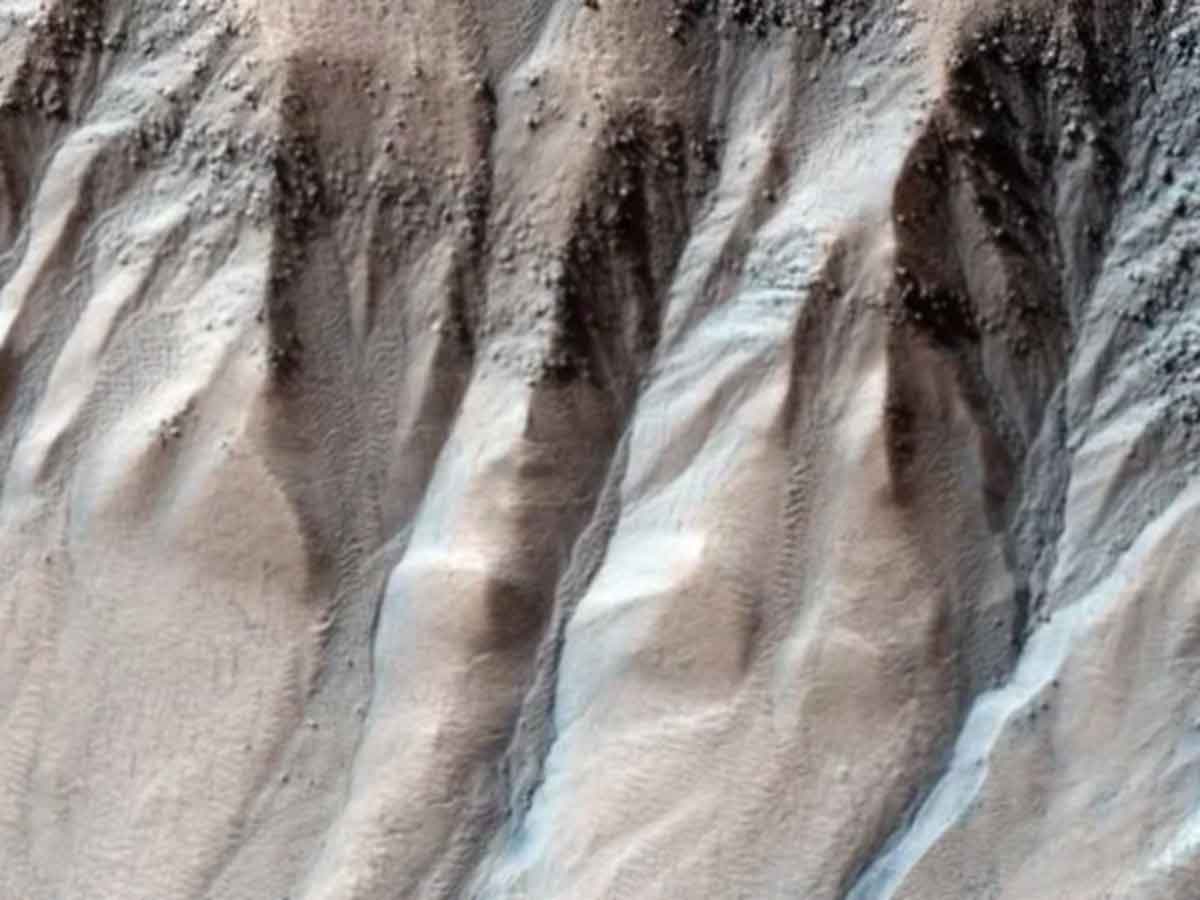
Chinese Academy of Sciences (CAS), University of Science and Technology of China (USTC) has recently developed an advanced robot chemist that utilizes artificial intelligence (AI) technology to create essential chemicals, such as oxygen, from local Martian resources in an effort to prepare for human survival on the red planet.
“If you think about the challenge of going to Mars, you have to work with local materials,” says Andy Cooper, a chemist at the University of Liverpool, UK. “So I can see the logic behind it.”
The Scientific Breakthrough
The AI-powered chemist can independently produce and improve catalysts, which are essential to the oxygen evolution reaction, drawing oxygen from Martian meteorites.
The entire process, from preparing the Martian ore to synthesizing, testing, and refining the catalysts, is carried out without any human intervention, making it an impressive example of self-sufficient Martian chemistry, a study published in Nature Synthesis on Monday (November 13) reported.
This impressive technology employs a machine-learning model that incorporates both first-principles data and experimental measurements. This intelligent approach enables it to quickly navigate through an astonishing three million possible compositions to pinpoint the best catalyst formula.
Not only does this accelerate the process, but it also demonstrates the incredible capabilities of AI in chemical synthesis for Mars exploration.
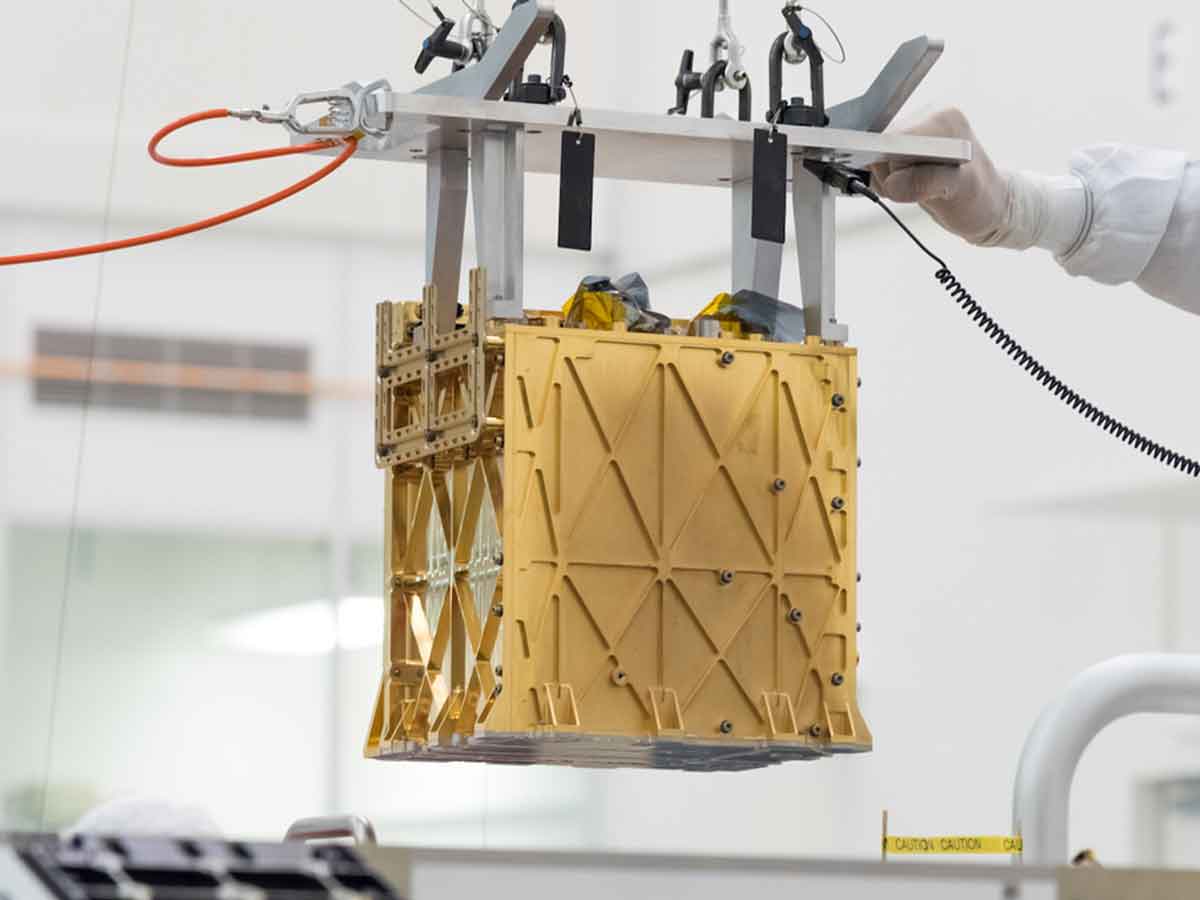
What's truly remarkable is that the resulting catalyst, created through the power of AI, goes beyond MOXIE expectations. It achieves a current density of 10 mA cm−2 for more than 550,000 seconds, proving the ability of AI to autonomously create chemicals and materials for Mars exploration.
What is MOXIE?
MOXIE (Mars Oxygen In-Situ Resource Utilization Experiment) is a microwave-sized device that makes oxygen on Mars. It uses an electrolyzer, a bit like fuel cells that make electricity from fuel and oxygen.
MOXIE's job is to snag CO2 from the thin Martian air and work its magic, splitting those CO2 molecules into oxygen (O2) and carbon monoxide (CO). But here's the kicker – MOXIE doesn't just stop there; it checks that O2 for purity and then lets it loose into the Martian atmosphere. This whole process involves three major players:
- The Carbon dioxide Acquisition and Compression (CAC) subsystem
- The SOXE subsystem
- The Process Monitoring and Control (PMC) subsystem
It's like MOXIE is the chef, and these subsystems are its trusty kitchen crew, ensuring everything runs smoothly in the oxygen-making kitchen on Mars.
Using MOXIE NASA’s Perseverance rover, which touched down on Mars in February 2021, and has successfully demonstrated the production of oxygen from the Martian air, which is mostly carbon dioxide.
This is the process by which scientists generate oxygen for astronauts during extended space missions
Mars Exploration Challenges Addressed by the New AI Chemist
Mars has always been a source of fascination for scientists, who dream of discovering evidence of past life and creating livable environments on the Red Planet. Achieving this goal requires utilizing local resources, and oxygen supply is a top priority for human activity on Mars.
Recently, the discovery of water activity on Mars has opened up new possibilities for generating oxygen through solar-powered electrochemical water oxidation processes using an oxygen evolution reaction (OER) catalyst.
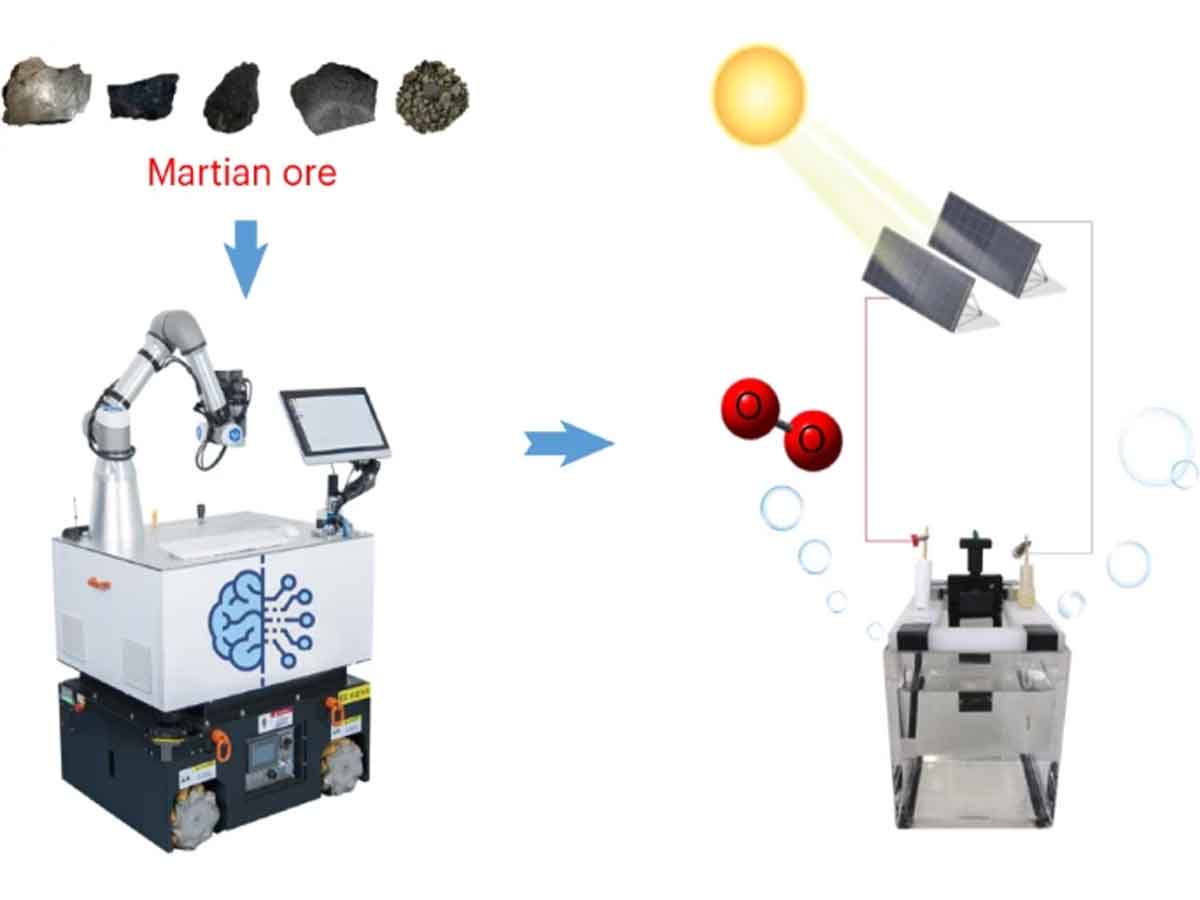
However, there are challenges to creating an unmanned and self-directing synthetic system. This is where our AI chemist comes in. Building on the success of previous robotic systems, the authors have developed an all-in-one AI chemist that has revolutionized the discovery of optimal synthetic formulas.
By learning from nearly 30,000 theoretical datasets to pick and synthesize a viable six-metal catalyst from 3,764,376 possible formulas) and 243 experimental datasets using machine learning (ML) and Bayesian optimization algorithms, the AI chemist has achieved results five orders of magnitude faster than traditional trial-and-error methods. The researchers successfully conducted the experiment at Martian temperatures of minus 37C.
AI Chemist's Data-Driven Protocol on Mars
The key to the AI chemist's success is a predictive model that has resulted in a polymetallic material with an OER overpotential of 445.1 mV at a current density of 10 mA cm−2, maintained for 550,000 s. But the research doesn't stop there – the team is working on a ground-based verification system to simulate more realistic space conditions.
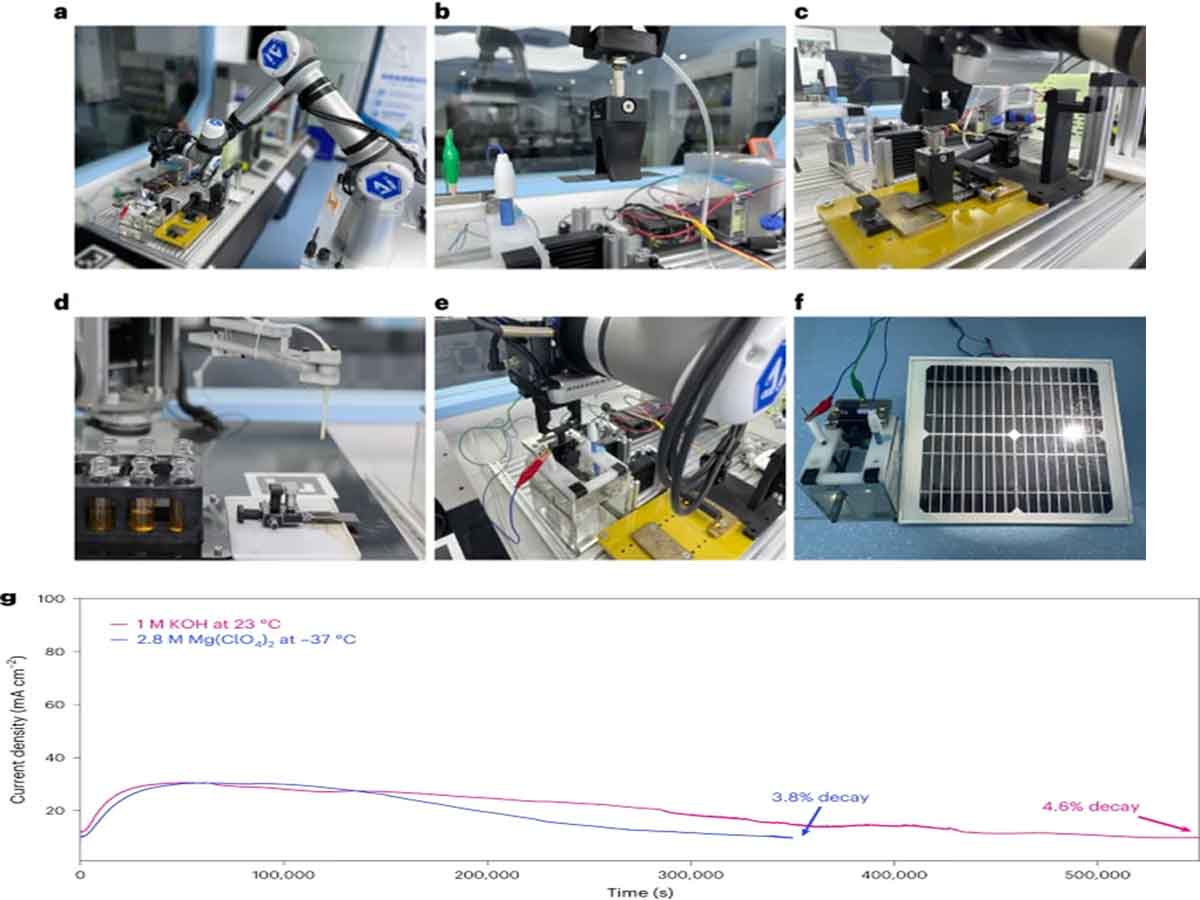
The AI Chemist Development utilizes a double-layer workflow on Mars. The outer layer handles automated experiments and data management, while the inner layer executes digital operations using its intelligent computational 'brain.'
This process involves obtaining local ore samples and conducting electrochemical OER testing, while the computational cycle employs molecular dynamics simulations and density functional theory calculations to estimate OER activities.
The proof-of-concept work not only validates the feasibility of oxygen production on Mars using AI but also establishes a generic and adaptive protocol and system.
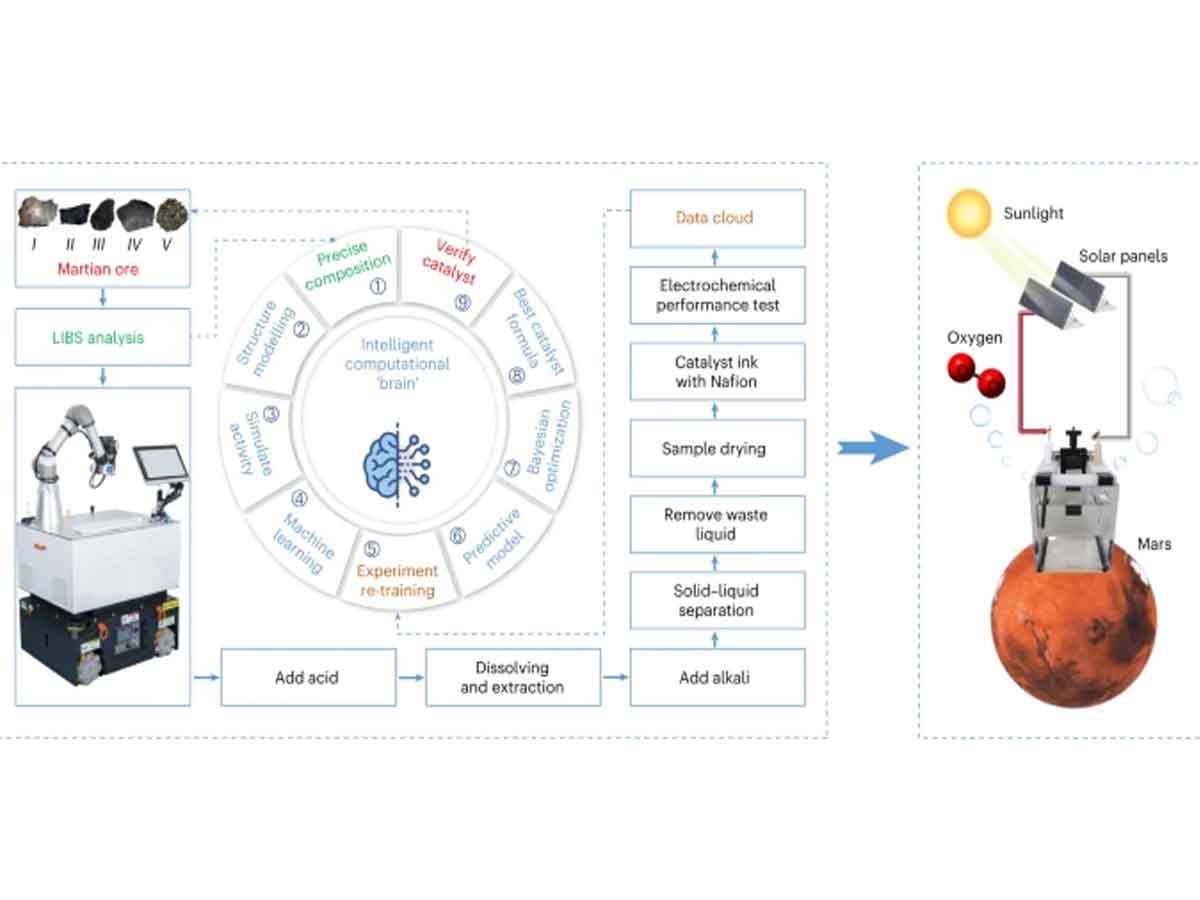
The study's authors believe that this innovative approach will not only ensure survival but also push the boundaries of automated material discovery and chemical synthesis for the exploration and occupation of extraterrestrial planets.
This opens up boundless opportunities for thriving on the Red Planet, mirroring the expansive landscape that awaits us. Especially when countries such as China and the US are increasingly interested in both AI and space science. Elon Musk, the SpaceX founder, has longstanding plans for a mission to Mars.












